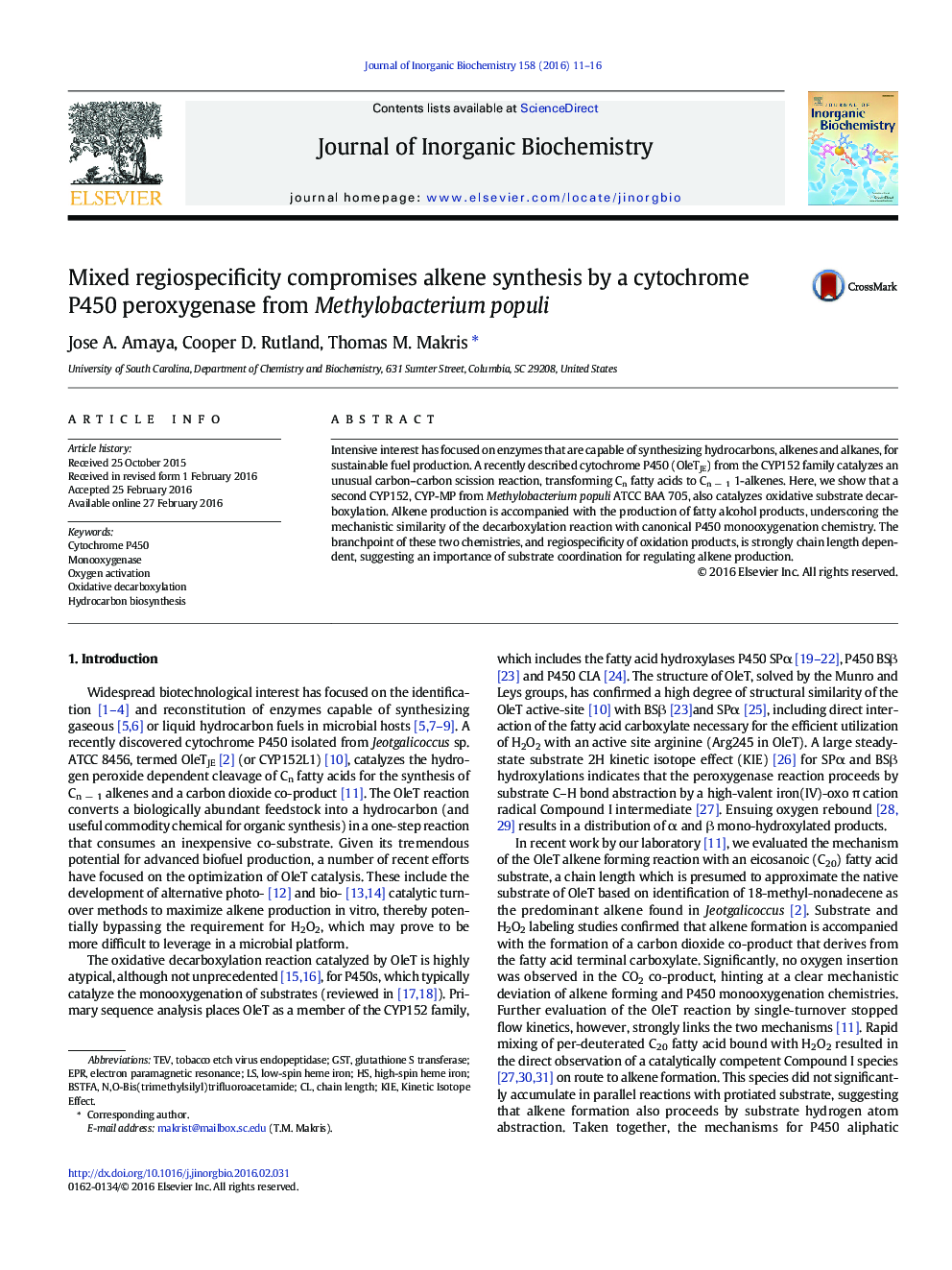| Article ID | Journal | Published Year | Pages | File Type |
|---|---|---|---|---|
| 1316831 | Journal of Inorganic Biochemistry | 2016 | 6 Pages |
•A CYP152 from Methylobacterium populi was cloned, overexpressed and characterized.•Alkene formation is more efficient with longer chain length substrates.•Fatty acid hydroxylation regiospecificity shows chain length dependence.
Intensive interest has focused on enzymes that are capable of synthesizing hydrocarbons, alkenes and alkanes, for sustainable fuel production. A recently described cytochrome P450 (OleTJE) from the CYP152 family catalyzes an unusual carbon–carbon scission reaction, transforming Cn fatty acids to Cn − 1 1-alkenes. Here, we show that a second CYP152, CYP-MP from Methylobacterium populi ATCC BAA 705, also catalyzes oxidative substrate decarboxylation. Alkene production is accompanied with the production of fatty alcohol products, underscoring the mechanistic similarity of the decarboxylation reaction with canonical P450 monooxygenation chemistry. The branchpoint of these two chemistries, and regiospecificity of oxidation products, is strongly chain length dependent, suggesting an importance of substrate coordination for regulating alkene production.
Graphical abstractA CYP152 from Methylobacterium populi was evaluated for alkene formation with a panel of fatty acid chain length substrates. The enzyme shows poor chemoselectivity for oxidative decarboxylation, and a large distribution of hydroxy fatty acid products. These results suggest that substrate coordination may modulate CYP152 decarboxylase efficiency.Figure optionsDownload full-size imageDownload as PowerPoint slide
